2026 could be another defining year for crowdfunding, as the creator economy, startup innovation, and community investing reach unprecedented scale across the globe.
From equity and rewards-based platforms to debt and real estate crowdfunding, the model has matured into a powerful funding engine connecting millions of backers with bold new ideas.
Driven by digital trust, seamless payment technology, and a growing appetite for alternative investment, crowdfunding is reshaping how entrepreneurs raise capital and how consumers participate in value creation.
With so many new developments across platforms and regions, it can be difficult to keep up with the numbers that truly matter.
That’s why this Crowdfunding Statistics 2026 Report compiles the latest data, forecasts, and trends to give you a clear snapshot of the global crowdfunding industry, what’s happening now, and what’s next.
Data Sources and Methodology
This article combines open-access resources and proprietary data to present accurate, up-to-date statistics and trends on crowdfunding.
Our methodology involves:
- Aggregating data from government databases, industry reports, and academic publications
- Incorporating exclusive insights from leading industry providers
- Regular updates to reflect the latest information
Key data providers include:
While we strive for accuracy, trends in crowdfunding are shifting rapidly.
Key Takeaway
- The global crowdfunding market is set to grow from $16.6B in 2025 to $18.5B in 2026, with an 11.6% CAGR.
- By 2033, the market could reach $108.6B, expanding at an 18.2% CAGR from 2025.
- Donation-based crowdfunding dominates, holding 37% of the market in 2024.
- Individuals are the largest backers, driving 42% of crowdfunding activity with personal and social campaigns.
- Social causes lead in applications, accounting for 35% of crowdfunding projects.
- North America commands the largest regional share at 41% in 2024.
- Europe’s market is poised for rapid growth, from $558M in 2024 to $1.43B by 2030.
Overview of Crowdfunding
Crowdfunding emerged in the late 20th century, driven by the rise of the internet and the need for alternative funding sources following the 2008 financial crisis.
It refers to raising small amounts of money from many individuals, typically via online platforms, to finance new business ventures or projects.
Since its inception, crowdfunding has experienced remarkable growth, with key milestones such as the launch of Kickstarter in 2009 and the implementation of the JOBS Act in the US in 2012 marking huge developments.
Today, the crowdfunding market is characterized by various platforms and funding models, including donation-based, rewards-based, and equity crowdfunding.
Major players include Kickstarter, Indiegogo, and GoFundMe, and changing regulations and technological advancements continue to shape its trajectory.
The global crowdfunding market, estimated at USD 17.72 billion in 2024, is expected to grow to USD 20.34 billion in 2025 and beyond. The Business Research Company
Longer-term forecasts show aggressive expansion: for example, the market is projected to hit USD 28.44 billion in 2025 (from USD 24.05 billion in 2024) and to expand at a CAGR of 18.24% toward USD 108.64 billion by 2033. Market Data Forecast
Other studies suggest more modest growth: one report forecasts a CAGR of 10.81% during 2025-2033. IMARC Group
This variation in projections reflects differences in assumptions about regulation, platform innovation, and capital flows.
What is consistent, however, is that crowdfunding remains a fast-growing alternative financing model across reward, equity, donation, and lending formats.
In practice, crowdfunding empowers entrepreneurs, creators, nonprofits, and small businesses by bypassing traditional intermediaries and opening access to capital from broad audiences globally.
Platforms are now integrating AI, enriched analytics, and global reach to improve campaign success, optimize matching, and reduce risk.
For instance, recent research shows AI models can predict campaign outcomes with 81% accuracy by analyzing narrative text, and modest improvements can boost funding success by 11.9%. arXiv
Key Crowdfunding Statistics
- The global crowdfunding market is projected to grow from USD 16.61 billion in 2025 to USD 18.50 billion in 2026, with a CAGR of 11.6% from 2025-2034. Business Research Insights
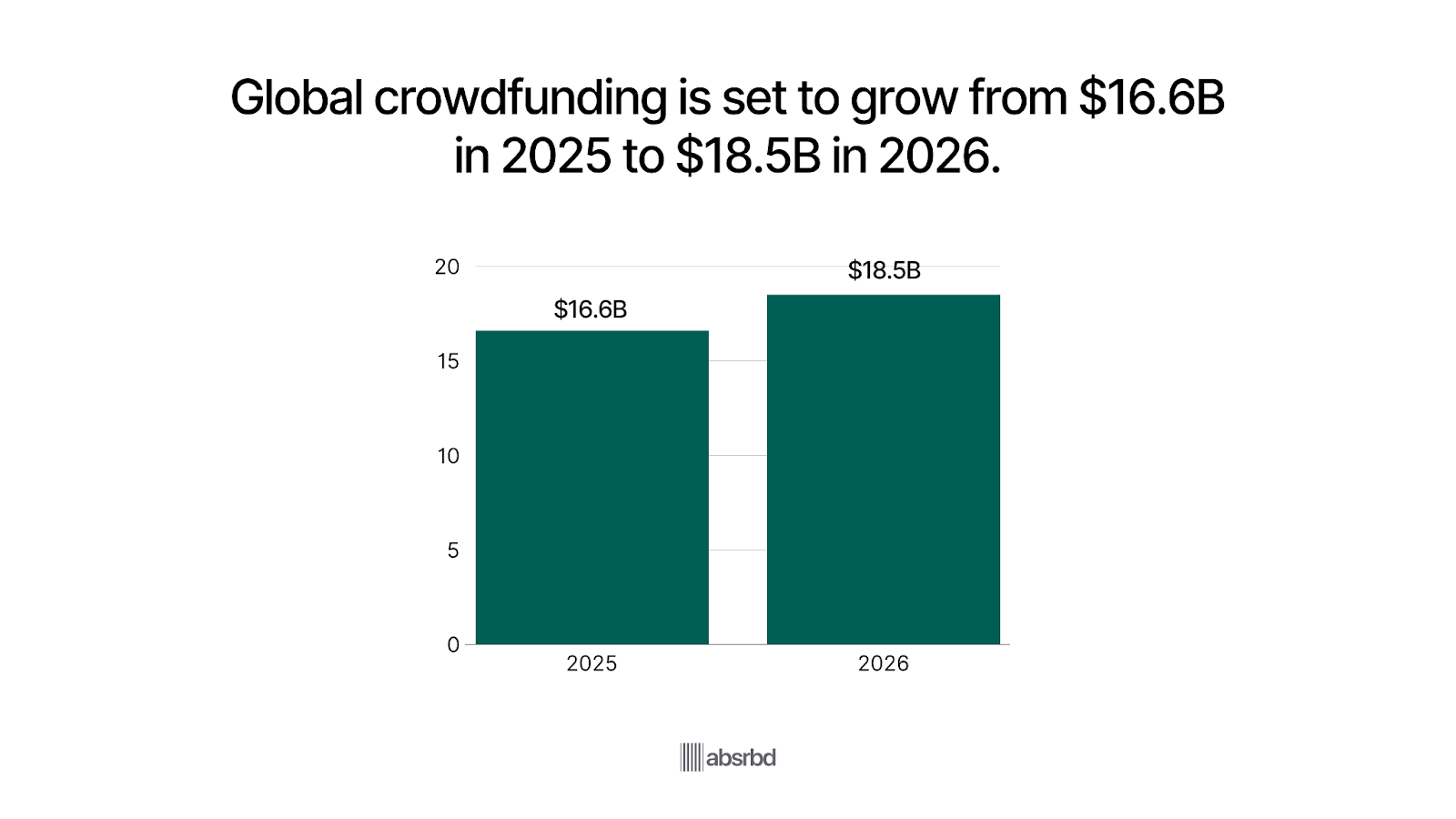
- From 2025 to 2033, the crowdfunding market is forecast to grow at a CAGR of 18.24%, reaching USD 108.64 billion by 2033. Market Data Forecast
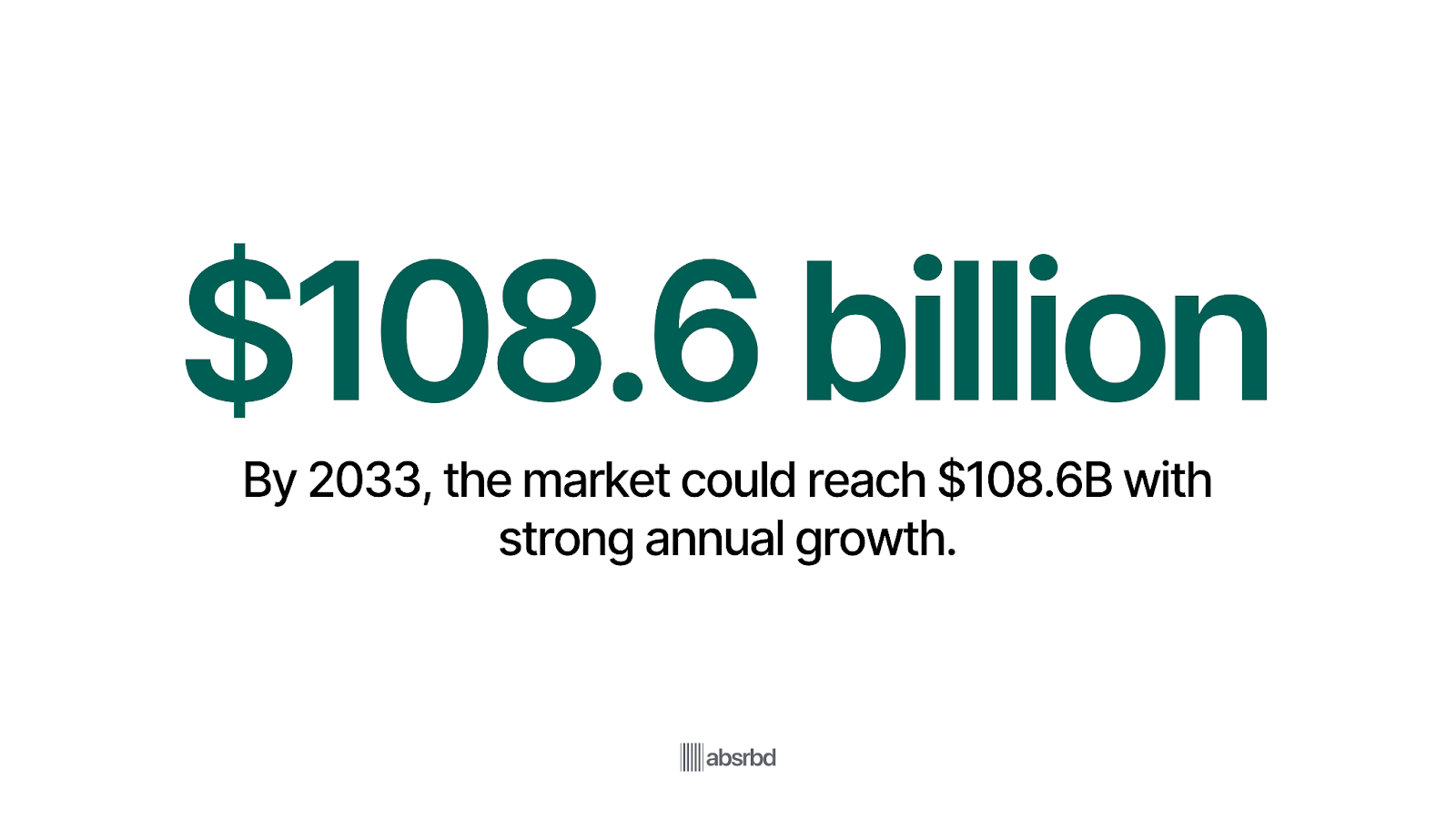
- The donation-based crowdfunding segment held 37.2% share of the global market in 2024, leading among funding types. Market Data Forecast
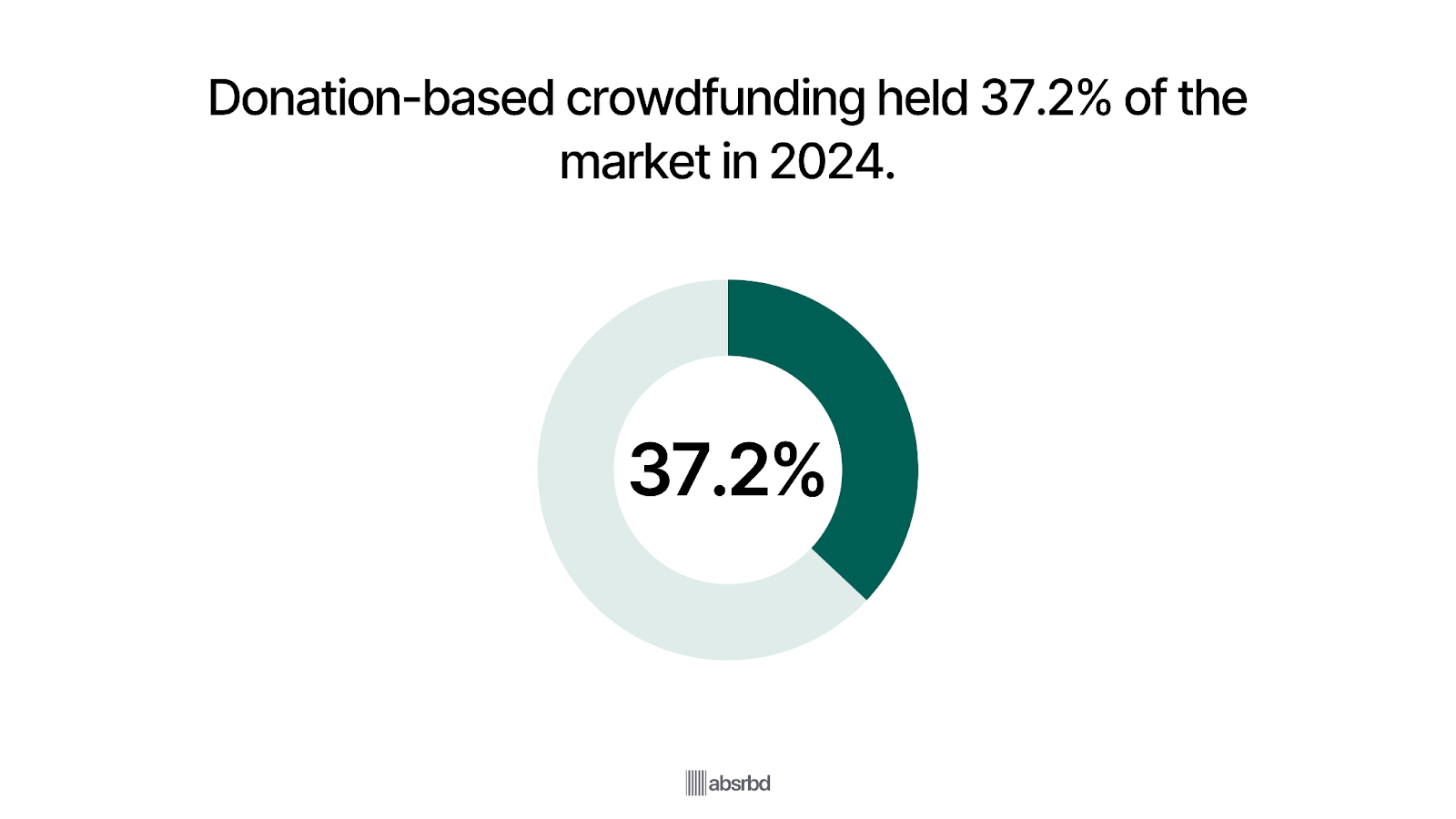
- Individuals comprised the largest end-user group in 2024 (42.3% of market activity), driven by personal, medical, and educational campaigns. Market Data Forecast
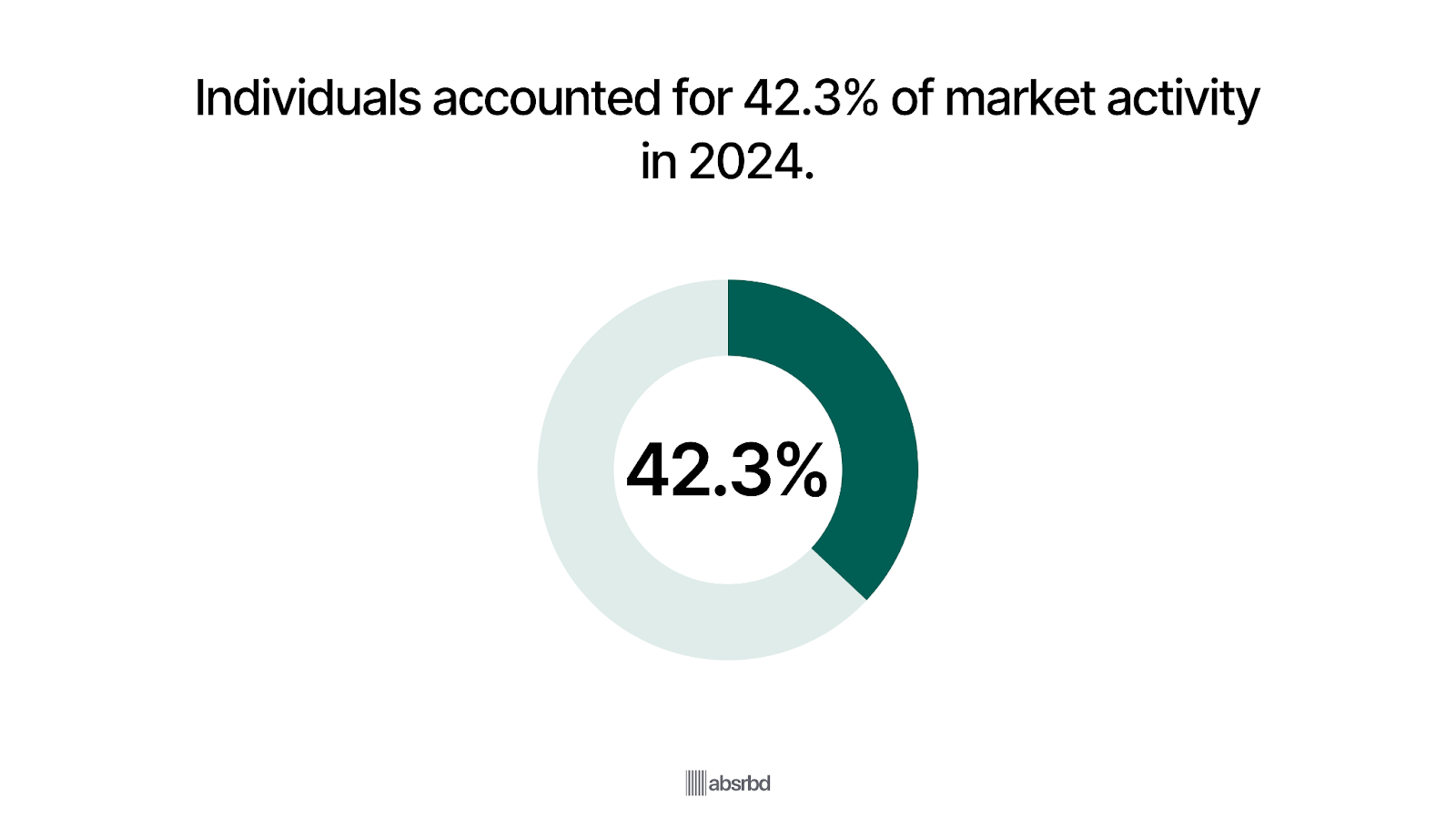
- Social causes accounted for 35.4% of crowdfunding applications in 2024, making them the largest category by application. Market Data Forecast
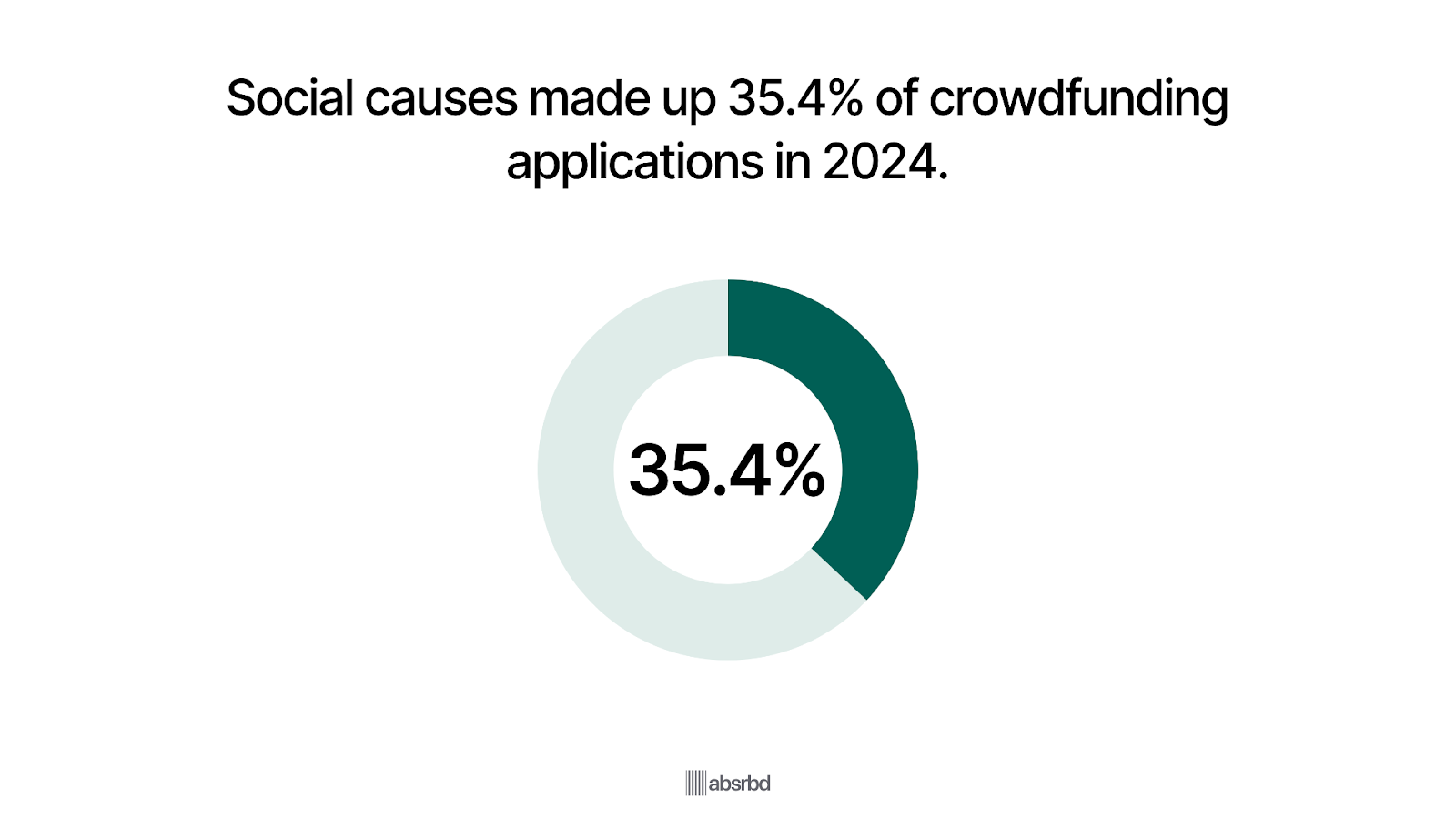
- North America held 41.2% of the global crowdfunding market share in 2024. Market Data Forecast
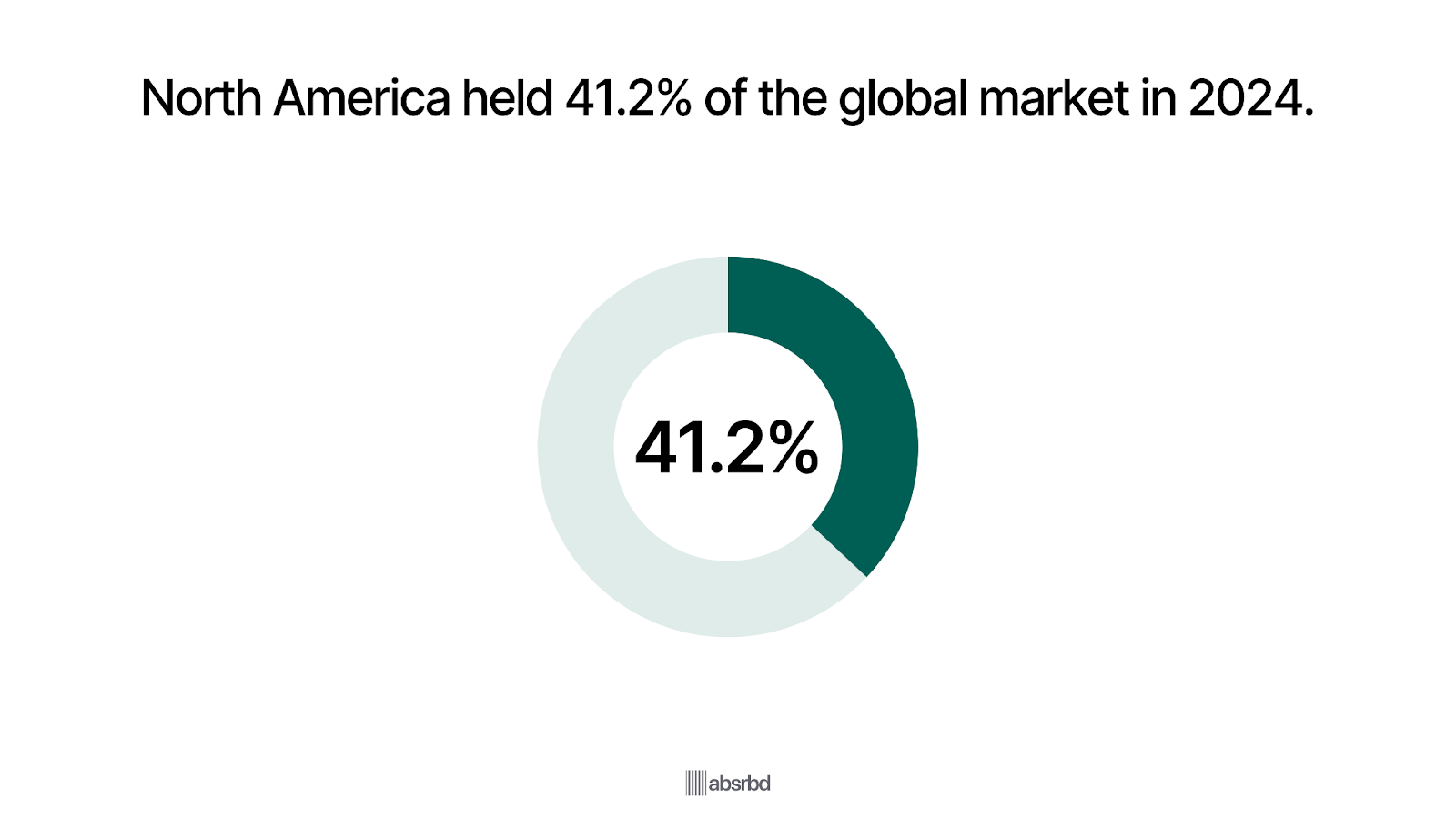
- The Europe crowdfunding market revenue was USD 558.2 million in 2024 and is expected to grow to USD 1,430.6 million by 2030. Grand View Research

- The US crowdfunding market commands a dominant position globally, contributing over 38% to the overall share. Global Growth Insights
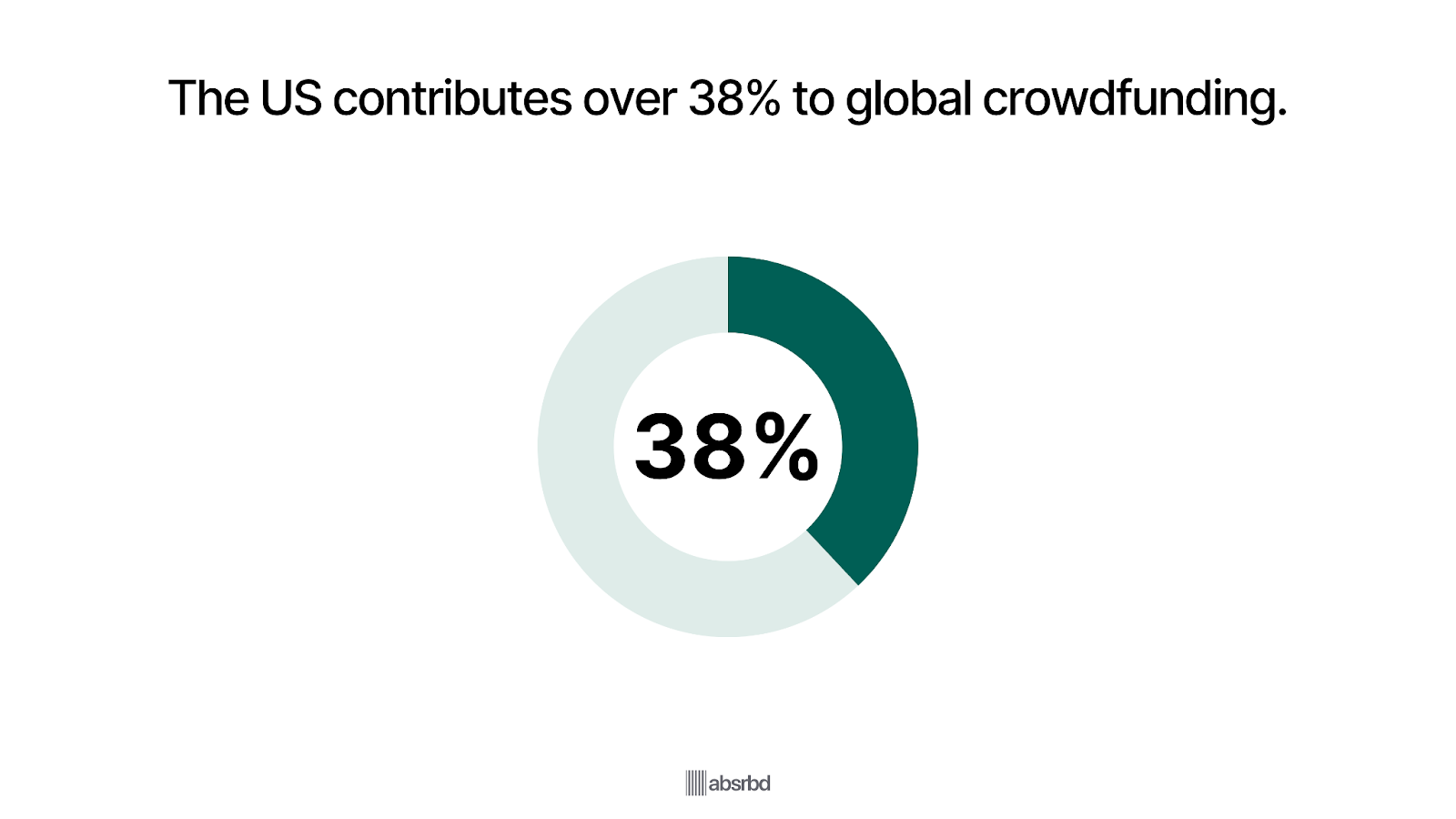
- Mobile platforms account for 58% of contributions or donor/backer interactions globally in some regions, especially in Asia-Pacific. Global Growth Insights

- Debt and peer-to-peer lending held 60.2% of crowdfunding market share in 2024 among funding models (globally). Mordor Intelligence
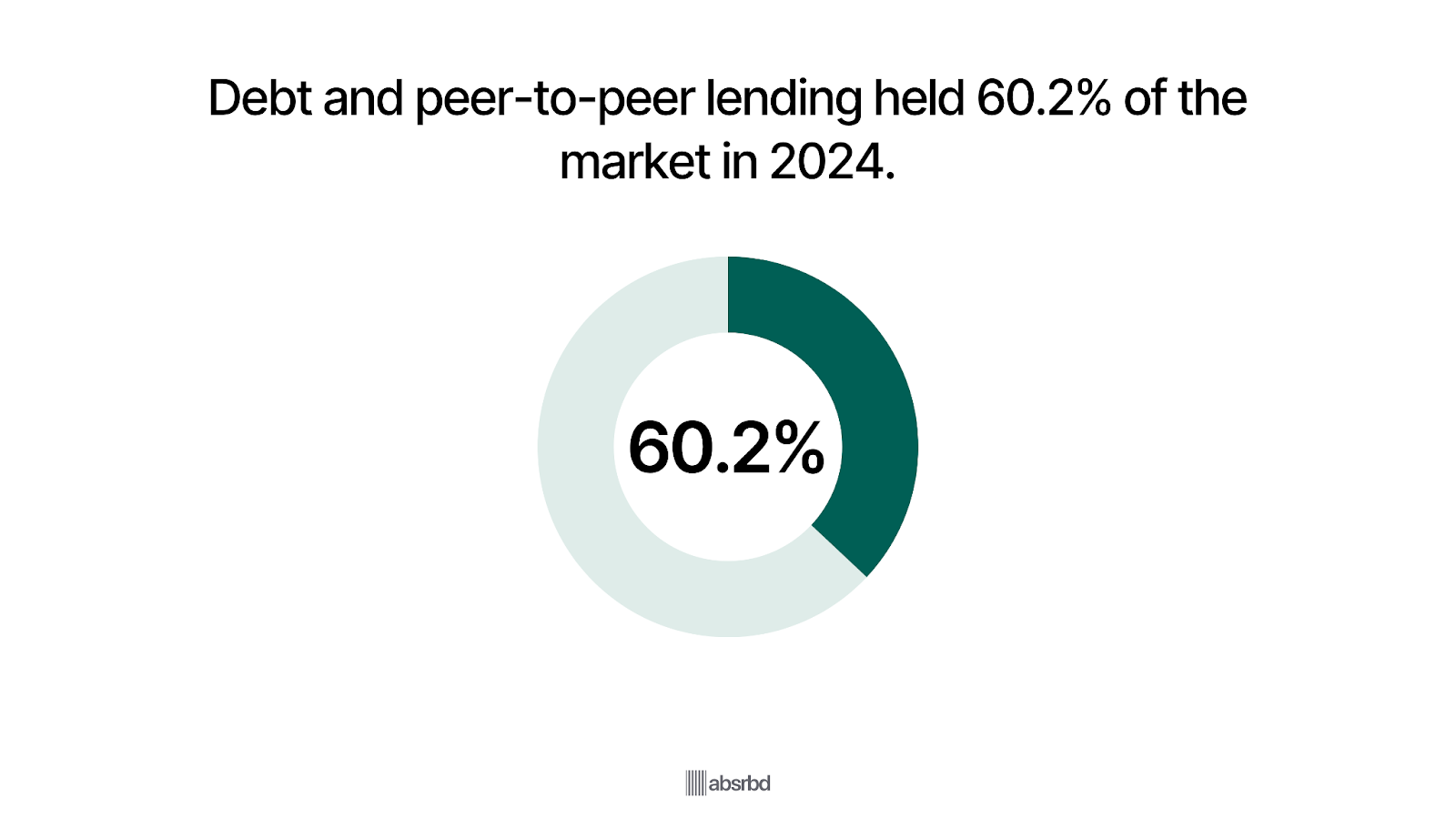
11. Equity crowdfunding is growing at a 17.1% CAGR through 2030, rising from a smaller base.Mordor Intelligence
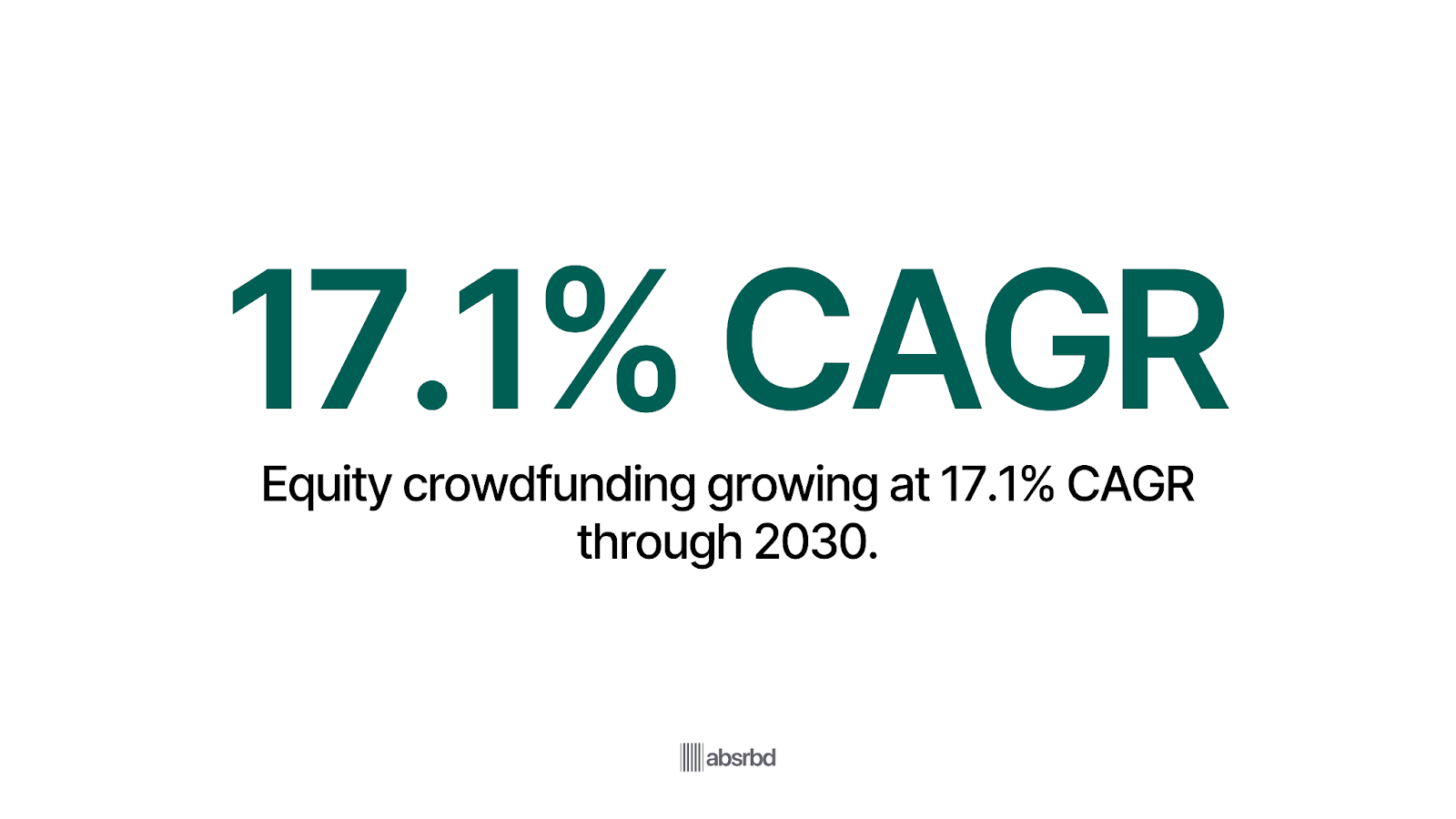
12. Institutional investor participation is rising, investment tickets above USD 1 million are among the fastest-growing brackets (16.6% CAGR) though smaller contributions still make up much of activity. Mordor Intelligence
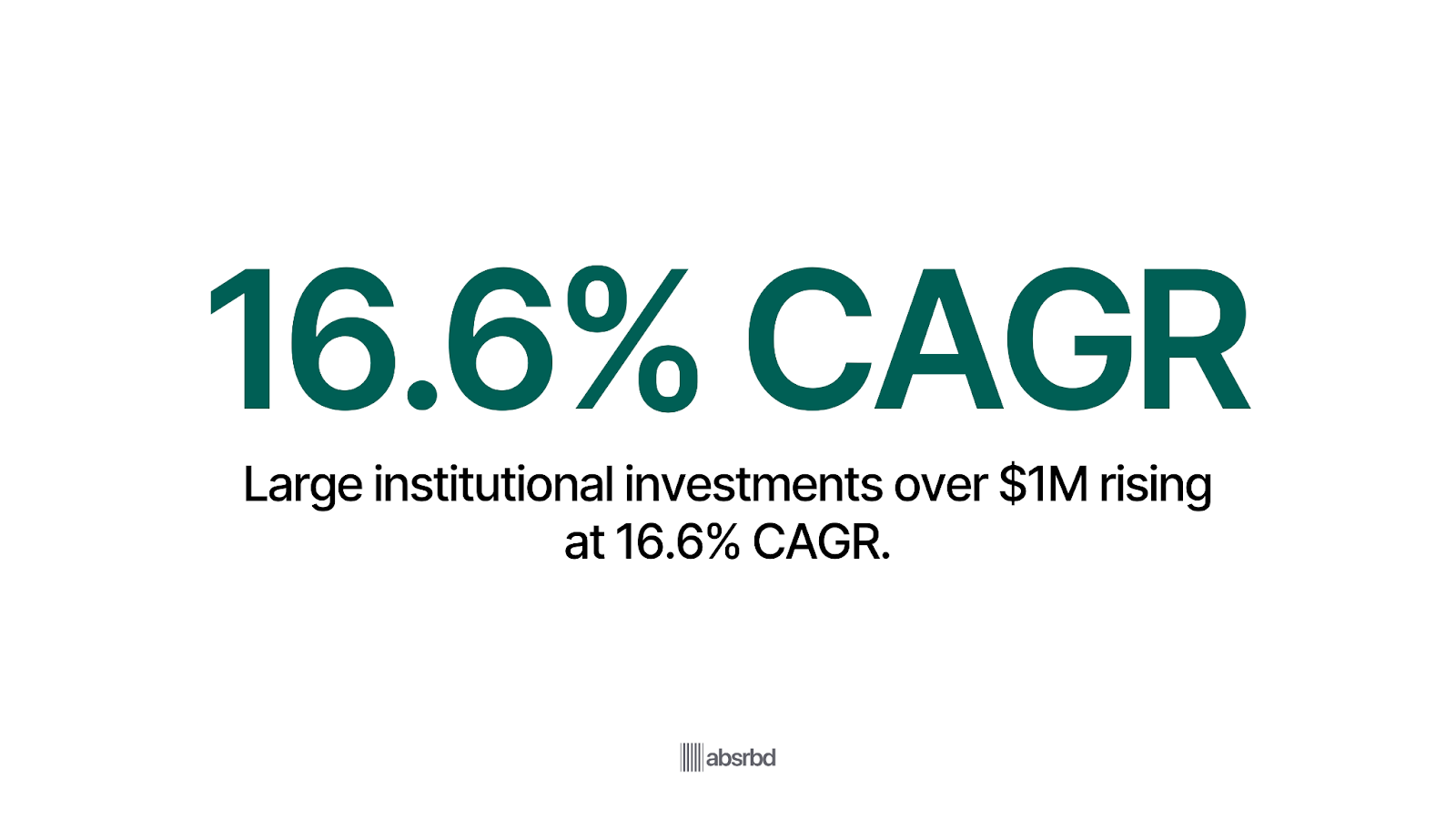
13. Retail/backer/donor participation accounted for 70% of market participation in 2024 in many global reports. Mordor Intelligence

14. In crowdfunding projects in the EU, 43% raised more than EUR 1 million in recent years. ESMA
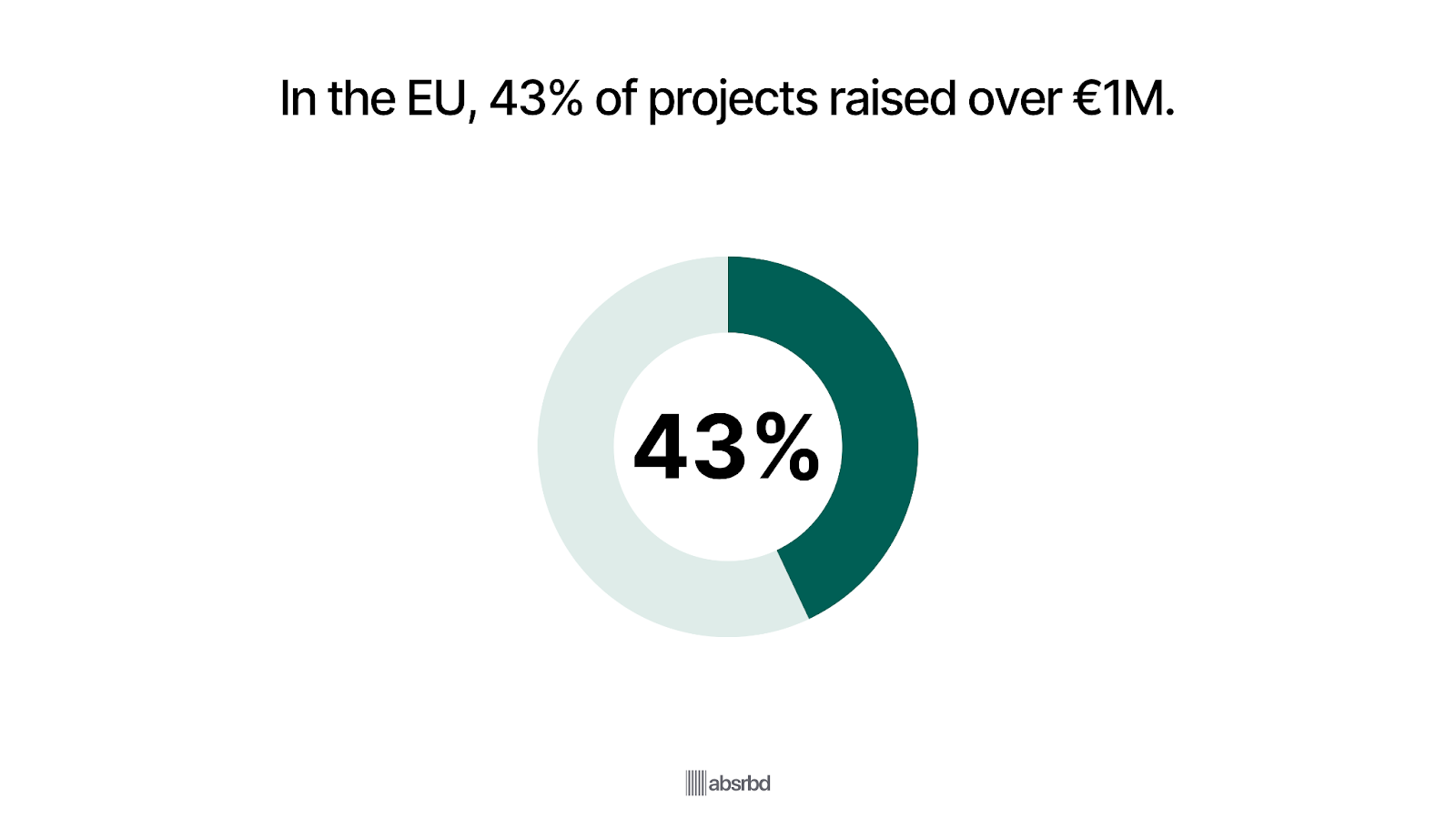
15. Among EU crowdfunding investors, repeat investors made up 61% in equity models and 67% in lending models. ESMA

16. The average interest rate for loan-based crowdfunding in EU projects was 7.41%, with average default rates around 3.63% (2022 data). ESMA

17. Average campaign activity via mobile and social integrations constitutes more than 60% of backer traffic in regions such as North America. Global Growth Insights

18. Blockchain and AI tools are increasingly used: in many reports 40% of platforms or campaigns integrate such tech for optimization, transparency, or fraud mitigation. Global Growth Insights
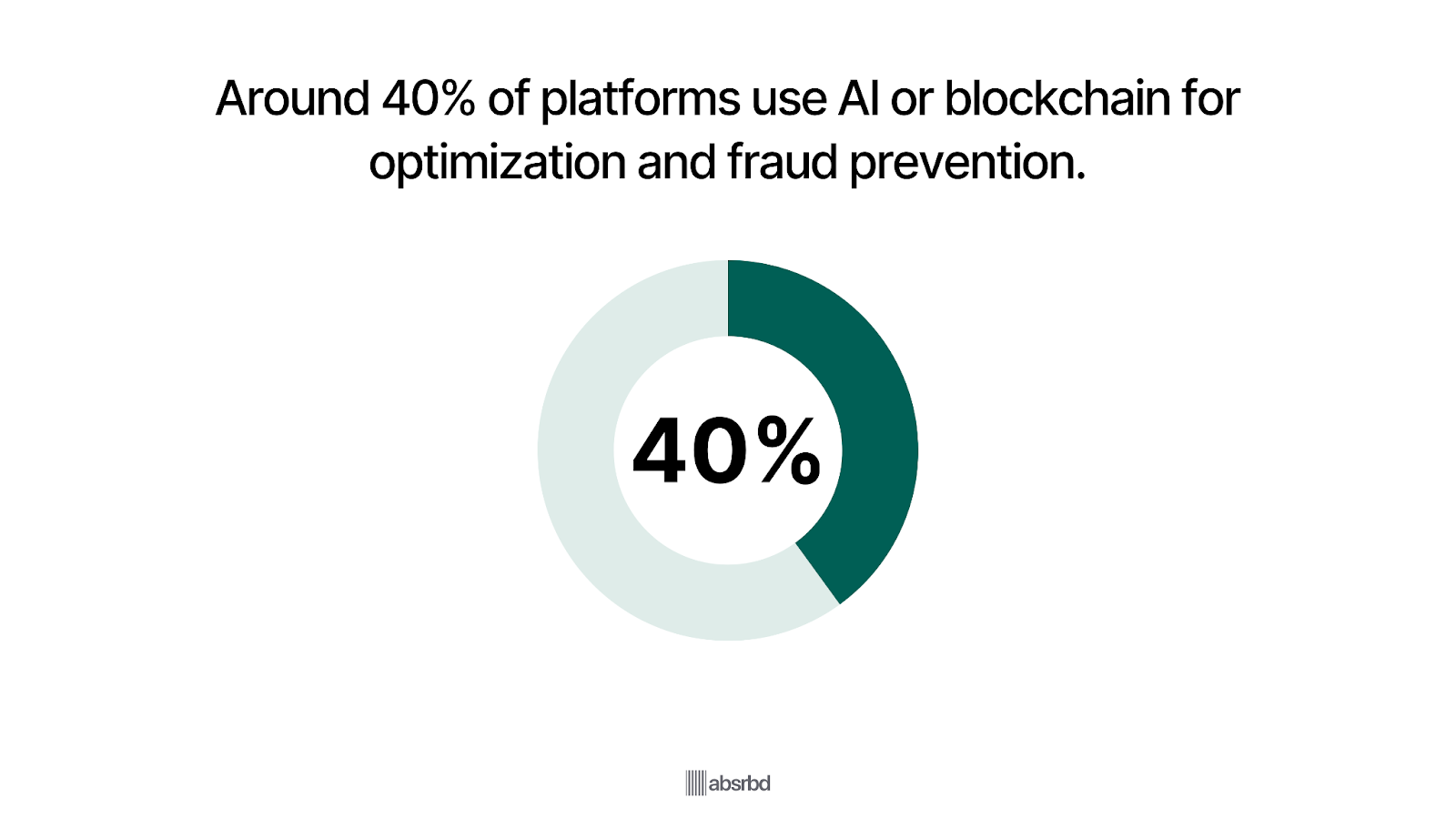
Major Trends in Crowdfunding Sector
Below are the key trends defining crowdfunding’s next phase, each highlighting where innovation, growth, and opportunity are converging in 2026.
Crowdfunding Market Expected To Reach USD 18.50 billion in 2026
The global crowdfunding market is projected to reach USD 18.50 billion in 2026, up from USD. Business Research Insights

This surge reflects accelerating digital adoption, increased regulatory clarity, and broader investor participation.
The market’s double-digit growth shows how crowdfunding has matured from an alternative model to a mainstream capital channel.
Asia-Pacific and Europe are expected to lead this expansion through 2026.
Cross Border Crowdfunding Accounts For 17% Of EU Campaigns
European crowdfunding laws are now harmonized, allowing seamless fundraising across borders.
About 17% of EU equity campaigns attract investors from multiple countries. ESMA

This regulatory shift is creating a unified European crowdfunding market with lower barriers and more investor confidence.
Countries such as Estonia, France, and Spain are experiencing the strongest cross-border growth.
AI Predicts Campaign Success With 81% Accuracy
Machine learning tools are transforming how creators plan and optimize campaigns.
A recent study found that AI models can predict crowdfunding success with 81% accuracy using narrative, imagery, and funding goals as indicators. arXiv

Campaigns that apply AI-driven insights achieve up to 12% higher success rates.
This development highlights how predictive analytics are redefining campaign strategy.
Blockchain Adoption In Crowdfunding Platforms Reaches 40%
Blockchain technology is now embedded in over 40% of crowdfunding platforms worldwide Global Growth Insights.
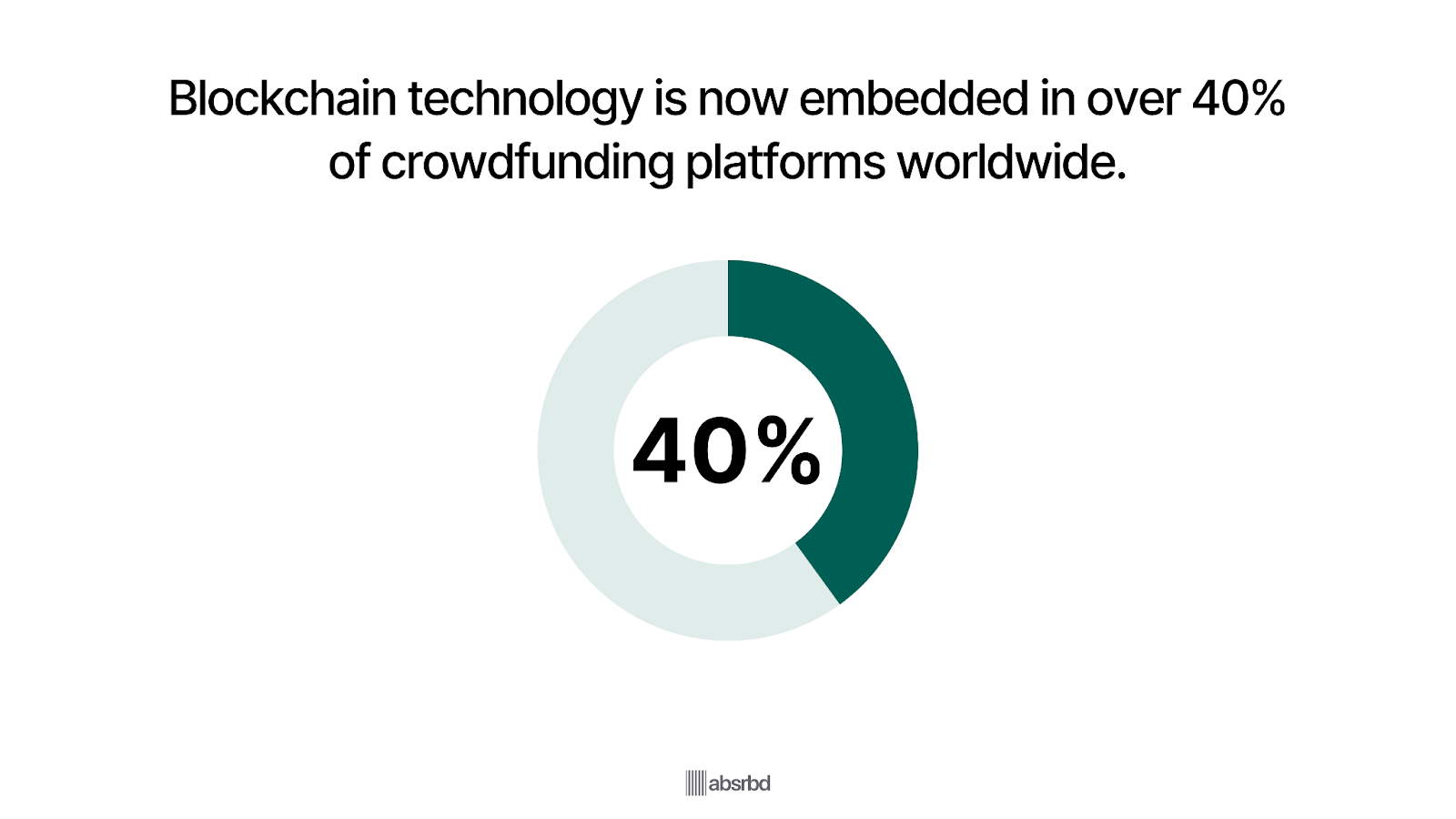
Smart contracts enable milestone-based fund releases and improve trust between creators and backers.
Tokenization allows fractional ownership, enhancing liquidity and investor confidence.
This digital infrastructure is redefining transparency and accountability across the sector.
Credit-Based Crowdfunding Shifting Toward Equity & Hybrid Structures
There’s a notable shift from donation/lending-only models toward equity crowdfunding and hybrid models (mixing equity, revenue-share, debt) to meet investor demand for ownership or returns.
Hybrid structures are gaining traction because they align risk and reward more transparently and allow creators more flexibility in how they raise funds.
Platforms in early 2026 are increasingly offering mixed instruments so creators can tap both retail backers and more serious investors.
Challenges in the Crowdfunding Industry
Crowdfunding has transformed how individuals and businesses raise capital, enabling projects to access a global pool of supporters.
Despite its rapid growth, the industry faces significant challenges that can impact both creators and backers.
Regulatory Fragmentation Increases Costs And Slows Cross Border Growth
Crowdfunding regulations remain inconsistent across markets, particularly for equity and lending platforms.
Over 35% of platforms report difficulties expanding internationally due to varying disclosure, licensing, and investment rules. Global Growth Insights

This fragmentation increases legal expenses, delays approvals, and limits investor participation across regions.
As a result, platforms often scale slower and focus only on domestic operations.
22% Of Crowdfunding Campaigns Fail To Reach Funding Goals
Despite growing adoption, campaign success rates remain uneven.
Roughly 22% of crowdfunding projects fail to meet their targets due to poor storytelling, unrealistic goals, or limited marketing reach. Global Growth Insights
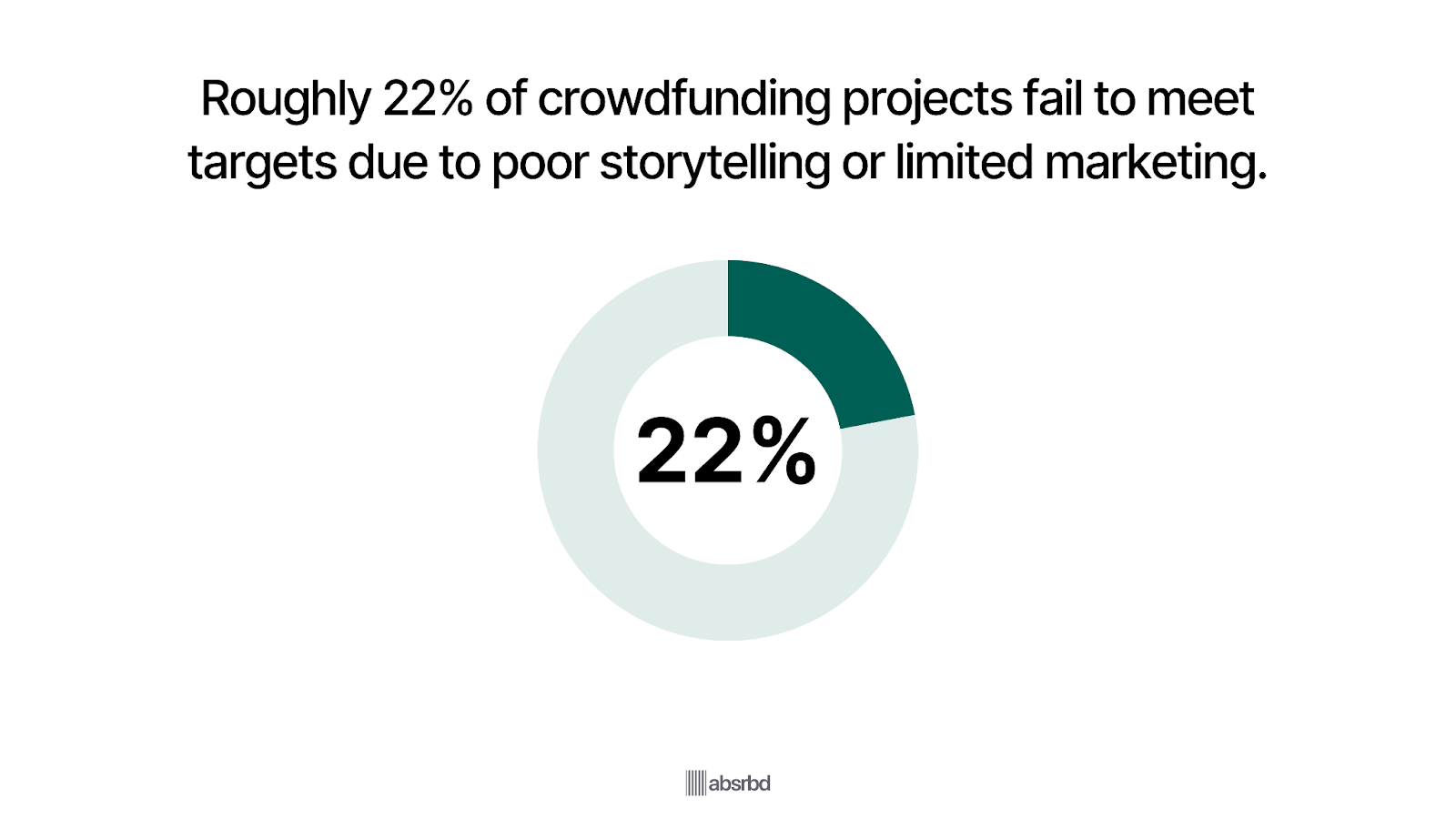
Unsuccessful campaigns discourage repeat participation from both creators and backers.
The industry’s reputation still depends on improving transparency and post-campaign accountability.
Trust Deficit And Fraud Risks Limit Investor Confidence
Fraud and misrepresentation continue to undermine public trust in crowdfunding platforms.
Around 30% of potential backers hesitate to invest because of concerns about fake campaigns or misuse of funds. Global Growth Insights

Platforms lacking strong verification or escrow mechanisms are most at risk.
Tighter vetting, identity verification, and third-party audits are becoming essential for credibility.
Information Gaps Between Creators And Backers Persist
Many campaigns provide limited visibility into project progress, budgets, or delivery timelines.
This information asymmetry leaves backers uncertain about the true feasibility of a project.
Lack of standardized disclosures often leads to unmet expectations and reputational damage for platforms.
Improved reporting standards and milestone-based updates could help close this gap.
Weak Consumer Protection Mechanisms Reduce Accountability
Global enforcement for failed or fraudulent campaigns remains inconsistent.
In most markets, platforms have limited liability once funds are transferred, leaving backers with little recourse.
The absence of strong consumer protection laws discourages participation in higher-value campaigns.
Governments are slowly responding with clearer refund, claims, and compliance frameworks.
Campaign Saturation And Donor Fatigue Increase Competition
The number of crowdfunding campaigns has grown faster than the pool of active backers.
Creators now compete fiercely for visibility, making marketing and influencer outreach essential.
Oversaturation has led to donor fatigue, where users become selective or disengaged.
Platforms are responding with AI-driven discovery tools and curated recommendations to sustain engagement.
Delays In Project Delivery Reduce Backer Satisfaction
Many successfully funded campaigns struggle to deliver rewards or products on time.
Supply chain disruptions and underestimated production costs cause significant fulfillment delays.
Such issues hurt backer confidence and reduce the likelihood of repeat support.
Transparent timelines and milestone tracking are becoming crucial trust-building tools.
High Compliance And Operational Costs Strain Small Platforms
Maintaining regulatory compliance and due diligence is expensive for emerging crowdfunding platforms.
Costs for audits, legal counsel, and cybersecurity often exceed what small or niche platforms can afford.
This limits innovation and increases consolidation as smaller players merge or exit the market.
Standardized compliance-as-a-service solutions could help level the playing field.
Rising Risk Of Illicit Use In Donation Based Crowdfunding
Donation-based crowdfunding has increasingly drawn scrutiny for potential misuse in money laundering or terrorism financing. Variability in oversight across regions makes it harder to detect and prevent such activity.
As donation platforms grow, authorities are pushing for stronger AML and KYC requirements. Balancing compliance with ease of use will be a major focus for 2026 and beyond.
Emerging Opportunities in the Crowdfunding Industry
The crowdfunding industry is experiencing growth and diversification, presenting various emerging opportunities for entrepreneurs and investors.
This growth is driven by technological advancements, changing consumer behaviors, and the increasing acceptance of crowdfunding as a legitimate funding source.
Equity Crowdfunding Growth
Equity crowdfunding, where backers receive a stake in the company in exchange for their investment, is one of the fastest-growing segments in the industry. In the U.S., equity crowdfunding grew by 50% in 2022, raising over $500 million. (World Metrics)
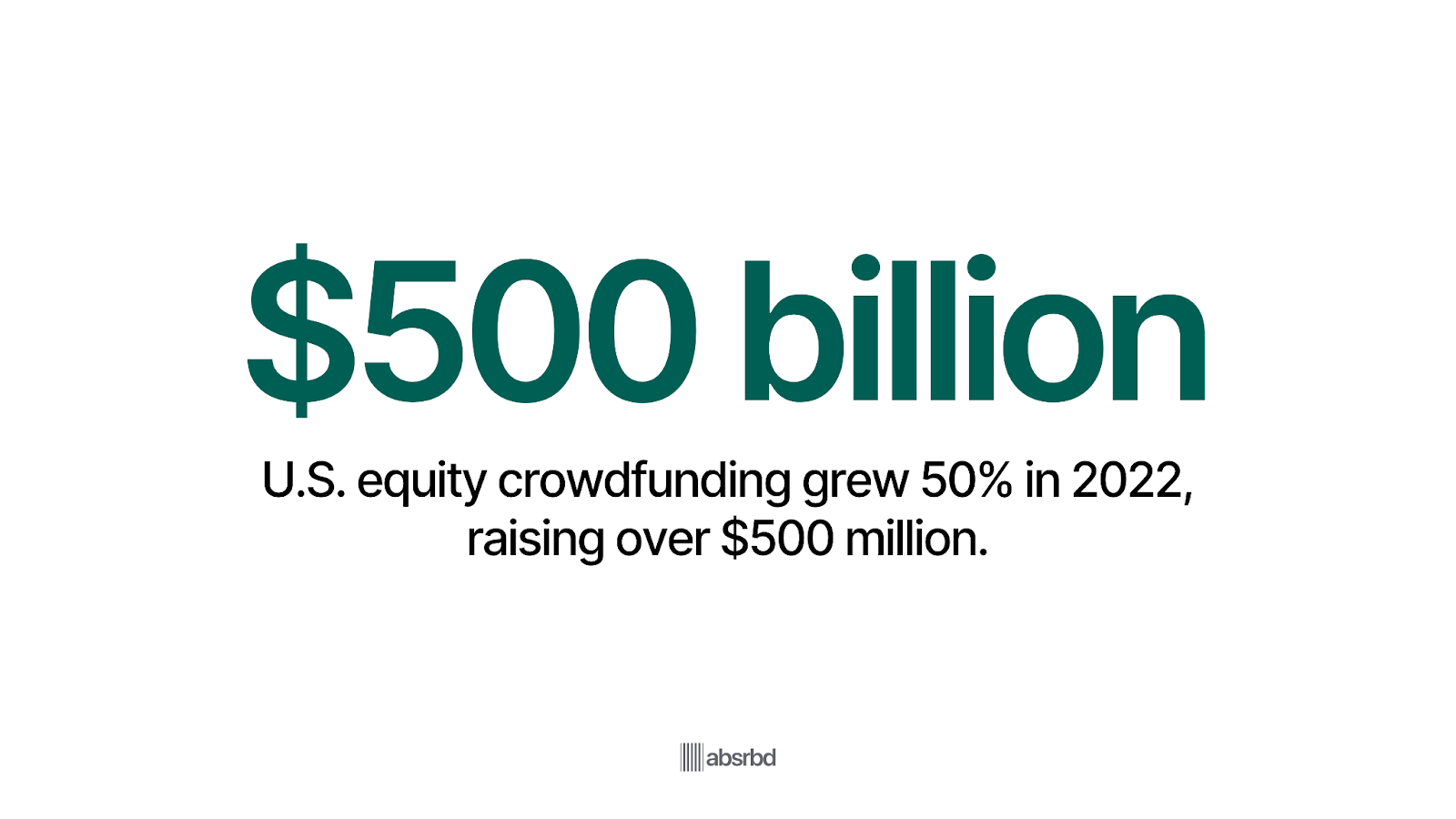
This growth is driven by regulatory changes, such as the 2021 amendments to the SEC’s Regulation Crowdfunding, which increased the maximum amount a company can raise from $1.07 million to $5 million annually. (Going VC)
Niche Platforms for Specific Industries
There is a growing shift toward niche crowdfunding platforms that cater to specific industries or causes, providing tailored support and audiences. Platforms like Seed&Spark (focused on independent films), MightyCause (for non-profits), and Republic (for startups) are examples of how specialization can lead to higher success rates.
Seed&Spark, for example, has an 82% success rate for film and television projects, higher than the general success rate on broader platforms like Kickstarter. This specialization helps projects reach the right audience and increase their chances of success.
Real Estate Crowdfunding Expands Rapidly
Real estate crowdfunding remains one of the fastest-growing verticals, expected to reach USD 29.05 billion in 2025. Research and Market

Investors are increasingly drawn to fractional property ownership, diversifying portfolios without large capital requirements.
Platforms specializing in residential and commercial projects are leveraging blockchain for fractionalized ownership and transparent asset tracking, making real estate investment more accessible to retail investors.
Integration of Blockchain and Cryptocurrencies
Integrating blockchain technology and cryptocurrencies creates new opportunities for decentralized crowdfunding, where smart contracts and tokens can be used to raise funds.
Platforms like KickICO and WeTrust allow projects to raise funds using cryptocurrency, offering benefits like lower fees, transparency, and access to a global investor base.
Blockchain's ability to provide transparency and security is particularly appealing in an industry that struggles with trust issues.
Technology led by blockchain could have reduced financial services infrastructure costs by between $15 billion and $20 billion per annum as of 2022. (PwC)
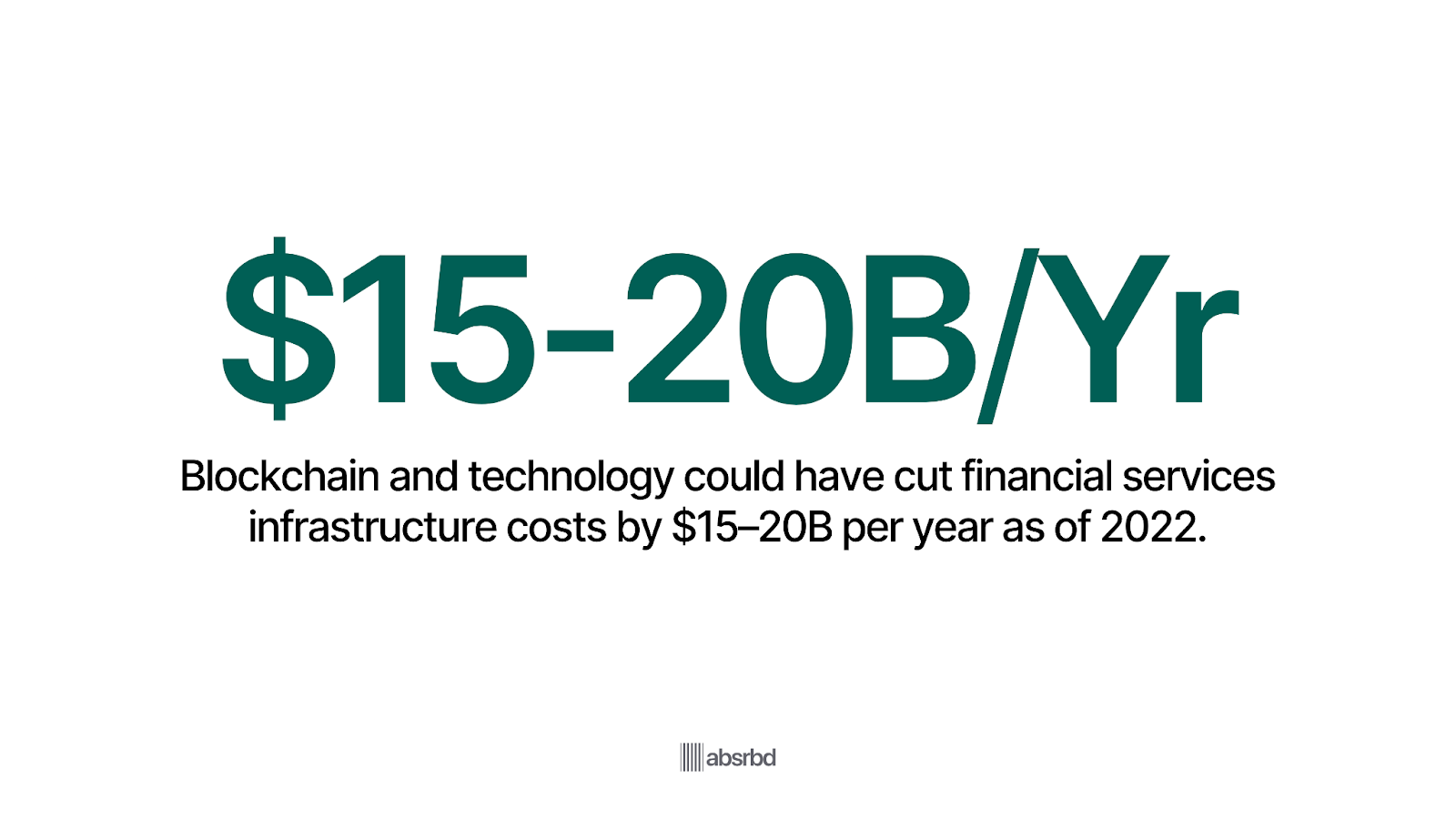
A report by PwC predicts that blockchain technology could reduce crowdfunding fraud by providing immutable transaction records.
Social Impact and Environmental Projects
Crowdfunding for social impact and environmental projects is gaining traction as more people seek to support causes that align with their values.
Platforms like GoFundMe and Patreon are increasingly being used to fund social causes, community projects, and environmental initiatives.
In 2023, GoFundMe reported that donations of $106 million were raised for natural disaster relief in 2023
A Nielsen study found that 73% of global consumers are willing to change their consumption habits to reduce environmental impact, suggesting a growing pool of backers for sustainability-focused crowdfunding projects.
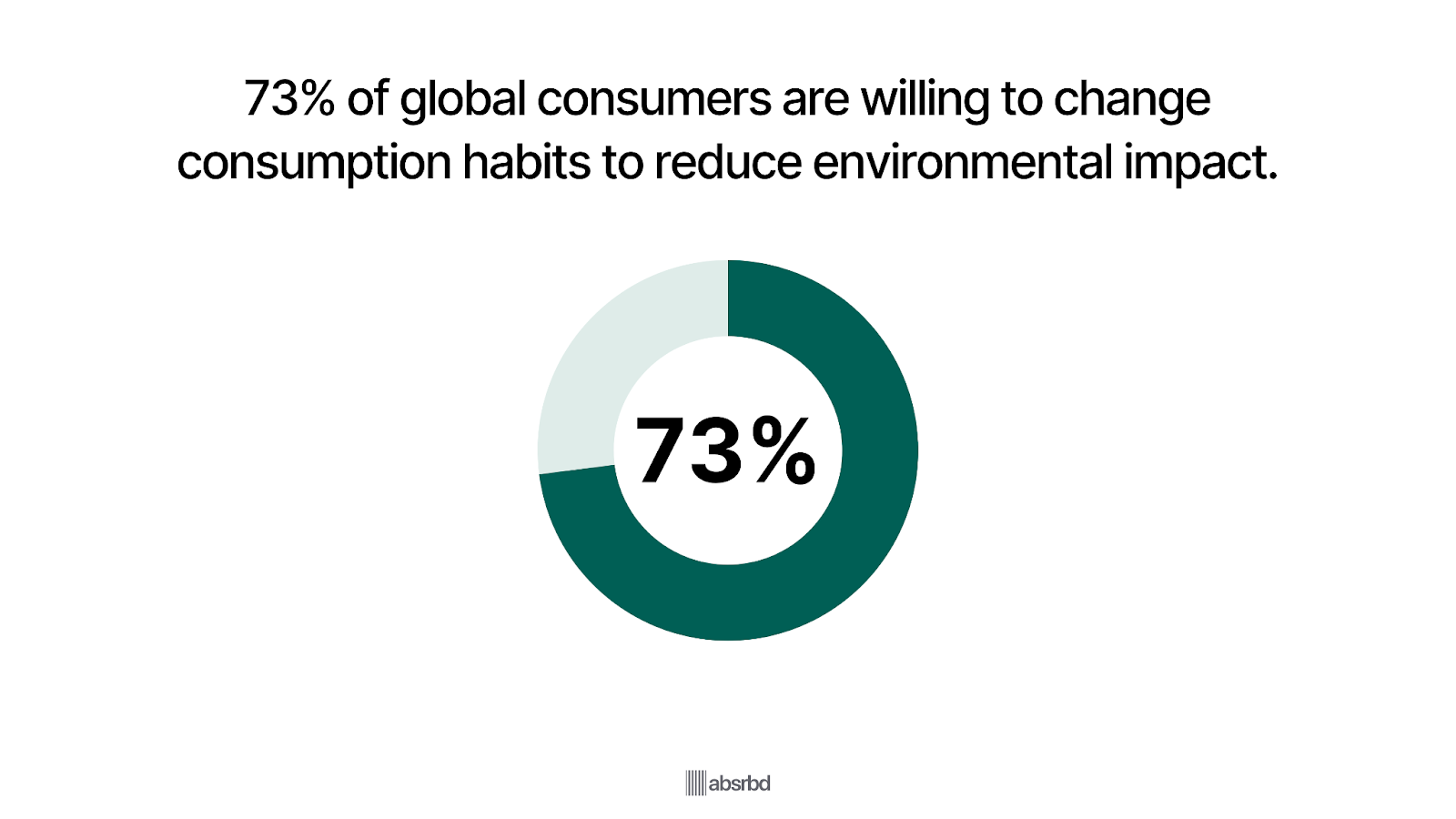
Corporate Crowdfunding and Partnerships
Companies increasingly use crowdfunding to test market interest and co-create with their customers.
For instance, LEGO used crowdfunding to gauge interest in a custom-designed set, which eventually led to the successful launch of a new product line. This approach allows companies to reduce risk by validating ideas with real customers before full-scale production.
Strategic partnerships between crowdfunding platforms and corporations are also on the rise.Kickstarter partnered with Amazon Launchpad, enabling successful campaigns to easily transition to Amazon’s retail platform.
This partnership enhances the value proposition for creators, offering them a clear path from crowdfunding to market.
Additionally, successful campaigns typically have an average of around 300 backers, indicating that broad outreach and effective marketing strategies are crucial for achieving funding targets. (Fit Small Business)
Impact on Stakeholders
As crowdfunding matures into a mainstream financing channel, its ripple effects are being felt across entrepreneurs, investors, financial institutions, and society at large.
Here’s how each group is being reshaped in 2026:
Impact on Consumers
Access to Innovation
Consumers now have unprecedented access to innovative products and ideas that might not receive traditional funding.
Platforms like Kickstarter and Indiegogo allow backers to support projects directly, fostering a sense of participation in the entrepreneurial process.
This access enables consumers to influence which products reach the market, aligning with their preferences and values.
Intangible Benefits
Contributing to crowdfunding campaigns offers consumers intangible returns, such as the thrill of supporting new ideas, insider knowledge about project development, and a sense of community.
These benefits often outweigh the lack of financial returns, as consumers derive satisfaction from being part of a movement that champions creativity and innovation.
Increased Risk Awareness
While crowdfunding democratizes funding, it also exposes consumers to risks like project failure or mismanagement.
The absence of legal guarantees means consumers must rely on the credibility of project creators, which can be challenging.
This dynamic has led to a more cautious approach among consumers, who may prioritize projects with transparent communication and a strong social media presence.
Impact on Businesses
Alternative Funding Sources
Crowdfunding provides businesses, especially startups and small enterprises, alternative funding sources bypassing traditional financial institutions.
This is particularly beneficial for ventures struggling to secure bank loans or venture capital due to perceived risks or lack of collateral.
Market Validation
Businesses can use crowdfunding not just for capital but also as a tool for market validation.
Successful campaigns demonstrate demand for a product or service, providing valuable insights that can guide further development and marketing strategies.
This validation can enhance a business's credibility and attract additional investors or partners.
Community Engagement
Crowdfunding fosters a community around a brand or product, allowing businesses to build a loyal customer base before launching.
Engaging with backers through updates and feedback can strengthen relationships and create advocates for the brand, ultimately leading to higher customer retention and loyalty.
Impact on Investors
Diverse Investment Opportunities
Equity crowdfunding offers investors a broader range of investment opportunities, including acquiring stakes in startups and small businesses.
This model democratizes investment, allowing individuals to participate in funding ventures that align with their interests and values.
Risk and Reward Dynamics
While crowdfunding offers potential high returns, it also comes with higher risks than traditional investments.
Many crowdfunded projects fail to deliver on their promises, which can lead to financial losses for investors.
As a result, investors are increasingly encouraged to conduct thorough due diligence before committing funds to projects.
Social Impact Investing
The rise of impact investing has led many investors to seek opportunities that not only provide financial returns but also contribute to social good.
Crowdfunding platforms focusing on social causes or sustainable projects are gaining popularity. These platforms allow investors to support initiatives that align with their ethical values while potentially earning returns.
Conclusion
Crowdfunding has firmly established itself as a cornerstone of modern finance in 2026.
What began as a niche tool for startups and artists has evolved into a global funding infrastructure connecting millions of investors and creators across every industry.
As digital platforms mature, technology and regulation are redefining what’s possible.
Blockchain, AI-driven credit assessment, and embedded payment rails are making campaigns faster, safer, and more transparent than ever before.
At the same time, equity and real-estate crowdfunding are expanding investor access to previously exclusive markets.
Yet the story is far from over. Economic uncertainty, regional regulations, and platform saturation will continue to test resilience.
The platforms that succeed will be those that balance innovation with compliance, diversify funding models, and build trust through transparency.
Frequently Asked Questions
What are the 4 Types of Crowdfunding?
The four primary types of crowdfunding are:
Donation-Based Crowdfunding: In this model, backers contribute funds without expecting financial returns or rewards. It is commonly used for charitable causes, personal emergencies, or community projects. Platforms like GoFundMe are famous for this type of fundraising, allowing individuals and organizations to raise money for social initiatives or urgent needs.
Equity-Based Crowdfunding: Equity crowdfunding allows investors to purchase shares in a company, making them partial owners. This method suits startups looking to raise capital while sharing ownership with backers. Platforms such as SeedInvest and Crowdcube facilitate these transactions, enabling businesses to connect with potential investors interested in equity stakes.
Rewards-Based Crowdfunding: This type involves offering backers tangible rewards or perks for their contributions. Commonly used by startups and creative projects, rewards can range from early access to products to exclusive merchandise. Kickstarter and Indiegogo are well-known rewards-based crowdfunding platforms where project creators can validate product demand and engage directly with their audience.
Debt-Based Crowdfunding: Also known as peer-to-peer (P2P) lending, this model allows individuals to lend money to businesses with the expectation of repayment with interest. This approach is ideal for companies struggling to secure traditional loans but confident in generating revenue. LendingClub and Prosper are examples of platforms that support debt-based crowdfunding.
Who Benefits From Crowdfunding?
Entrepreneurs and Startups
Entrepreneurs benefit from crowdfunding, particularly those with limited access to traditional funding sources. It provides them with a platform to raise capital without the stringent requirements of banks or venture capitalists.
This accessibility allows them to test market interest and validate their ideas before fully launching their products.Successful campaigns can generate substantial funds, as evidenced by the Flow Hive project, which raised over $2.1 million in just one day on Indiegogo, far exceeding its initial goal.
Investors and Backers
Investors, including individual backers, gain opportunities to support innovative projects and potentially earn returns, especially in equity crowdfunding. They can engage with early-stage companies and products, often receiving rewards or equity in return for their contributions.
This model allows them to diversify their portfolios and invest in ventures they are passionate about, creating a sense of community and shared purpose.
Consumers
Consumers benefit by gaining early access to innovative products and services that may not be available. They often receive exclusive rewards or discounts for their support, fostering a direct relationship with the creators.
This engagement allows consumers to influence product development through feedback, ensuring the final offerings align with their preferences.
Communities and Social Causes
Crowdfunding also supports social initiatives and community projects, enabling nonprofits and grassroots organizations to raise funds for causes that resonate with the public.
This model democratizes funding, allowing smaller projects to gain visibility and support that might not be possible through traditional fundraising methods.
What is the Success Rate of Crowdfunding?
The success rate of crowdfunding campaigns varies across different platforms and types, but overall statistics indicate that it still needs to be higher.
According to the latest data, the average success rate for crowdfunding campaigns is approximately 22.4% to 23.7%. (Fundera)
This means that less than a quarter of all campaigns reach their funding goals, highlighting the competitive nature of the crowdfunding industry.
Several factors influence the likelihood of success. Campaigns that achieve at least 30% of their funding goal within the first week are more likely to succeed overall.
Additionally, successful campaigns typically have an average of around 300 backers, indicating that broad outreach and effective marketing strategies are crucial for achieving funding targets. (Fit Small Business)




